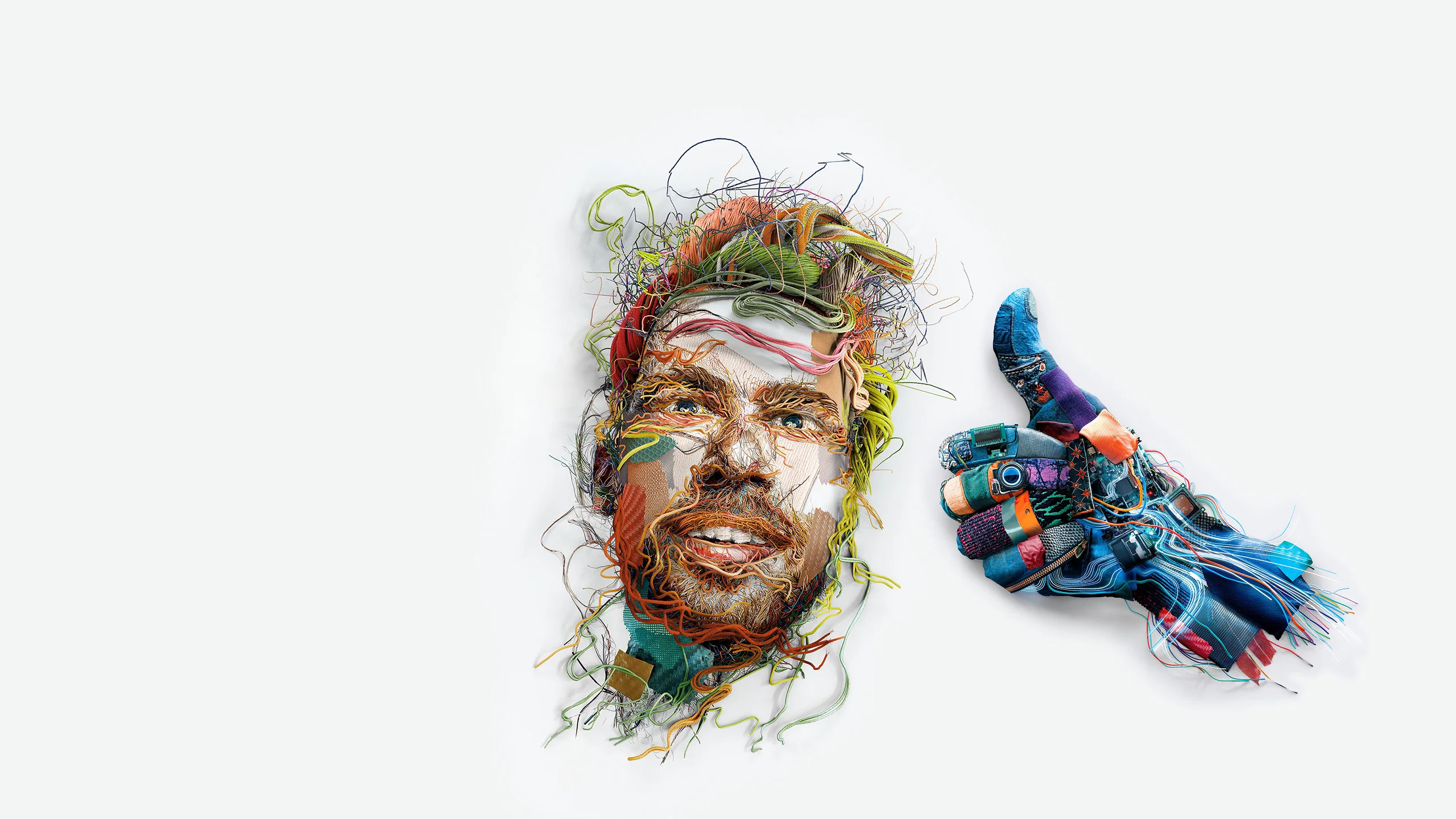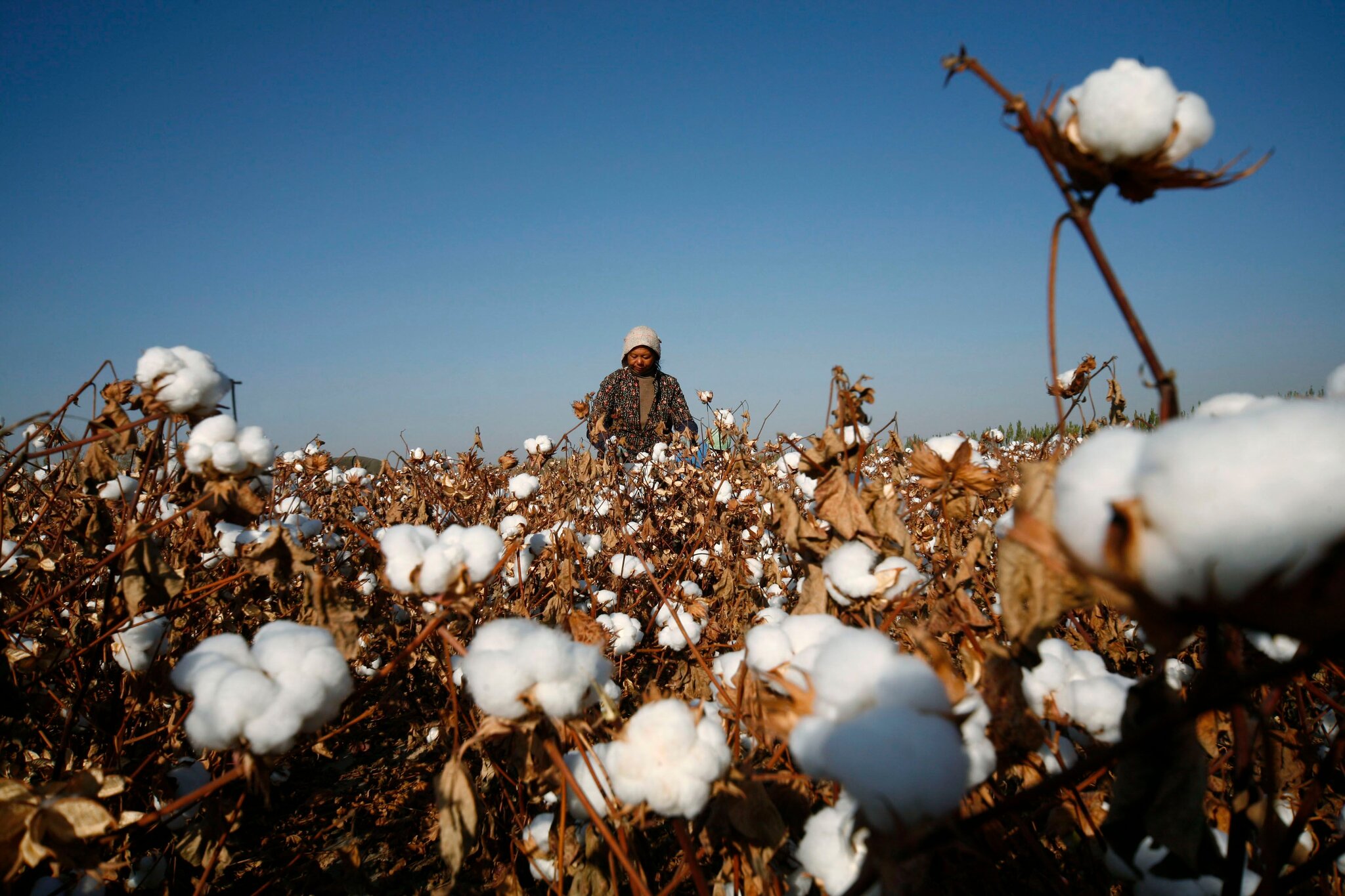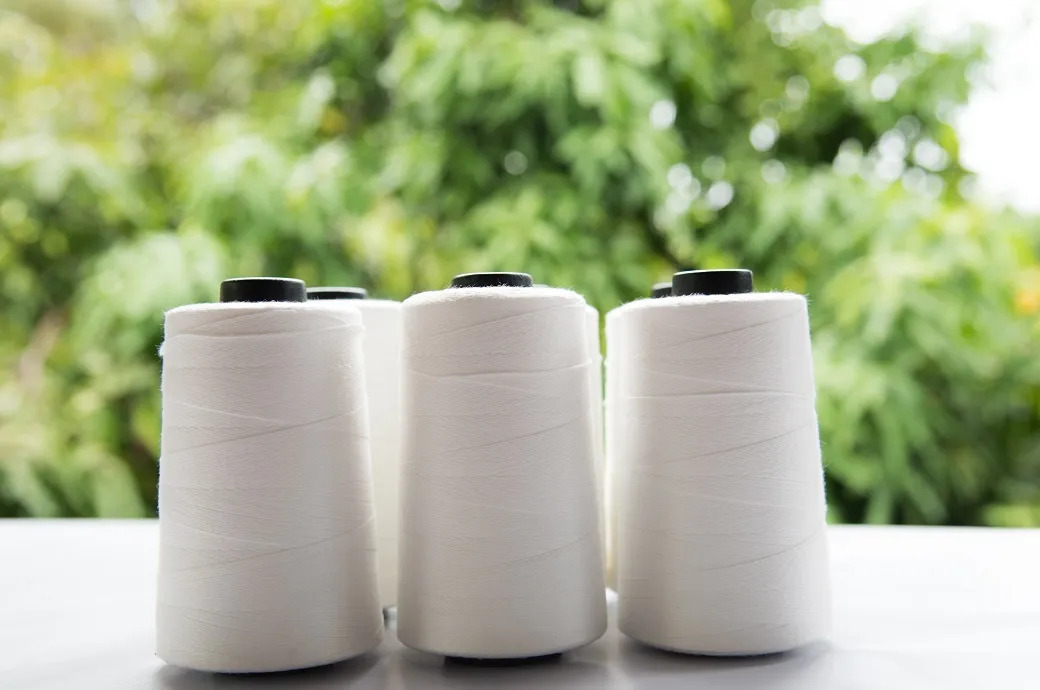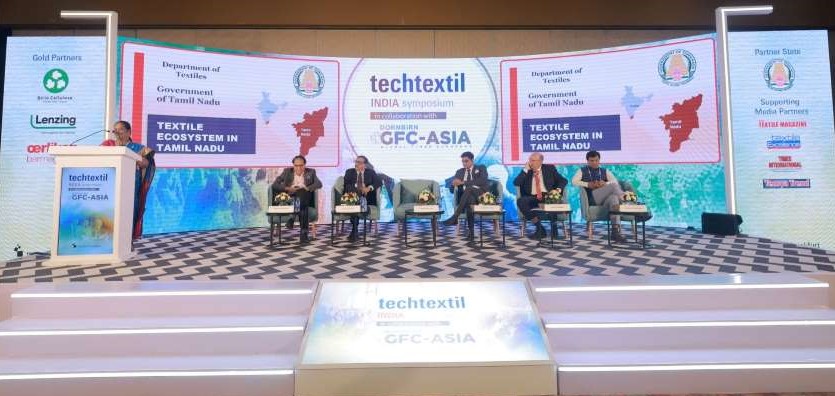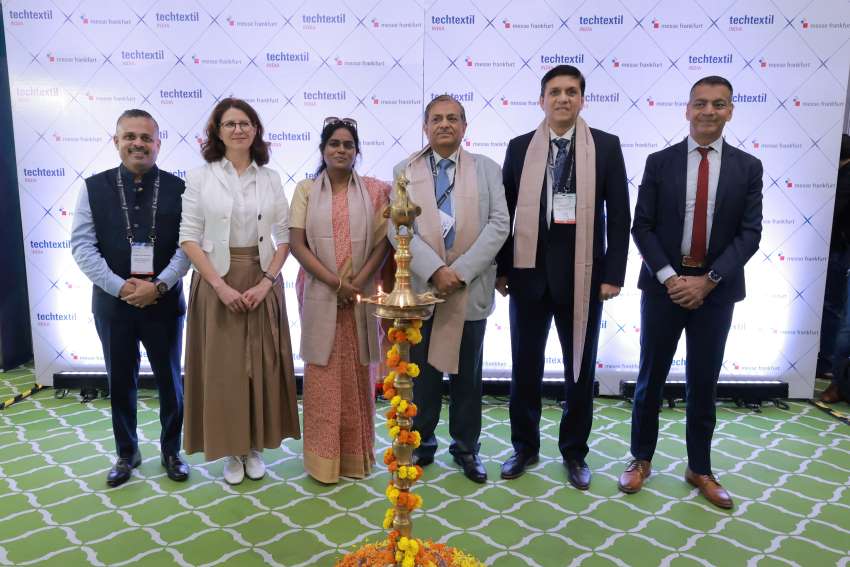FW
Pakistan has taken a number of steps to enhance exports of cotton products. The textile policy for 2015-19 envisions doubling the exports of the textile and clothing sector from 13 billion dollars to 26 billion dollars. In order to reduce the cost of doing business, electricity tariff for industrial units has been reduced. Availability of affordable finance for the export sector has considerably improved.
Duty-free import of textile machinery is continuing during the current financial year. A technology up-gradation fund scheme for the textile sector has also been formulated to help boost exports of textile products. Exports of cotton yarn from Pakistan have risen while its consumption by the domestic value added textile sector has declined. Since consumption of cotton yarn by the value added textile sector has reduced exports of cotton yarn have increased.
Pakistan is the fifth largest producer of cotton in the world, the third largest exporter of raw cotton, the fourth largest consumer of cotton, and the largest exporter of cotton yarn. Meanwhile the power loom industry in Pakistan is facing a serious financial crunch. It has to bear the brunt of imports as well as multiple direct and indirect taxes including sales tax. More than half the power loom units have already closed down and unemployment has reached dangerous levels.
From January to September 2016 textile production in Kyrgyzstan has decreased by 30.3 per cent and clothing production by 15.8 per cent. Reasons include the financial crisis in partner countries such as Kazakhstan and Russia. The textile and clothing industry in Kyrgyzstan comprises mainly of small and medium-sized enterprises. It’s the highest export earner after gold and food.
Kyrgyz sewing companies have benefited from Kyrgyzstan's entry into the EEU. The cost of fabrics imported to Kyrgyzstan has increased only by seven to eight per cent while there are now no customs procedures at the border and delivery of goods to Russia has become one day shorter. Freight forwarders have reduced the cost of delivery of clothes from Kyrgyzstan to Russia by half.
At the same time, the garment industry faces problems. Most apparel businesses do not have their own premises, and the rented premises are often not suitable for production. The industry also suffers from limits on electricity consumption and shortage of skilled workers and working capital.
In order to adapt to increasing competition, apparel companies need better knowledge of the market, administrative and operational management skills, and better access to financial resources. The dollar appreciation and depreciation of the Russian ruble against the Kyrgyz som affected Kyrgyz exports.
This year’s ITMA Asia + CITME has Karl Mayer offering its innovative solutions for warp knitting, weaving preparation and technical textiles. In the fields of its expertise, the innovative market leader is showcasing its advanced products simultaneously in two places - in hall 4.1. on stand A 30 in the NECC and at an in-house show at Karl Mayer (China) in Wujin, Changzhou.
At the exhibition, visitors can also see an extensive range of products. The focus of the in-house is on the production of lace and an important new development will be setting new standards for multi-bar jacquard machines in terms of the cost: benefit ratio. This new machine is demonstrating its potential by making a fashionable lace for the outerwear market. The first of the machines have already been sold. In, Wujin, Changzhou, the company is also showing a new double-bar raschel machine that produces fashionable shoe designs and a direct warping machine for warp knitting with a new, hybrid operation.
Tricot machines are the focus of the presentation in the NECC. Karl Mayer will be continuing with the generation change that it introduced at ITMA 2015 in Milan. Manufacturers of technical textiles can see some new ideas for lightweight constructions on the company’s stand in Shanghai.
Currently, Karl Mayer is working on a gradual generation change for its HKS machine series which will delight its customers. The company is showing the fourth generation of its HKS 3-M at the exhibition premises. These extensive modifications have focused on the ergonomic machine design and the Kamcos® 2, a completely new automation platform.
After the resounding success of the first edition, the next edition of Intex South Asia is back, bigger and better than ever before with a new and powerful curated platform that enables a wider scope for both exhibitors and buyers to connect, network and expand. The fair to be held in Sri Lanka, between November 17 to 19, is the only international sourcing show in South Asia that brings together over 150 global suppliers of yarns, apparel fabrics, denims and clothing accessories from India, Pakistan, Bangladesh, Sri Lanka, China, Korea, Taiwan, Hong Kong, Indonesia and more.
This year there has been an 42 per cent increase since last year. Sri Lanka is the ideal location for a pan-regional show given its strategic location, logistical connectivity and neutrality. Intex South Asia focuses on the South Asian region because it is the second largest hub for textile and apparel manufacturing in the world, second only to China.
Like the inaugural edition of Intex South Asia in 2015 that had a grand opening, this year too, the proceedings are to be grand. Intex South Asia is endorsed by the High Commission of India, Colombo; the Export Development Board of Sri Lanka (EDB); Joint Apparel Association Forum (JAAF) and other trade bodies in Sri Lanka, South Asia and other regions. Intex South Asia, with its theme “One Show – One Platform – One World”, would attract garment exporters and manufacturers, buying houses and agents, importers, distributors and traders, trading houses, local and international retail chain stores, apparel brands and fashion labels, design studios, government bodies and trade associations etc.
The sourcing show, is bringing international suppliers to Sri Lanka which will enable manufacturers to get world class fabrics on time thus increasing their competitive edge globally. At the same time, Sri Lanka’s central location in the region makes it an excellent point for re-exports.
The major factors which will decide cotton prices in India in the coming months are exports and domestic mill demand for cotton. Cotton supply in the domestic market is expected to be sufficient as export and consumption will be lower during the current cotton season.
Total availability of cotton is pegged at 398 lakh bales versus an estimated consumption of 309 lakh bales. Exports are expected to decline by 40 per cent in 2016-17 as compared to last year. The yield forecasts for cotton will increase by 10 per cent due to a sudden spell of heavy rains in the cotton growing regions of Maharashtra, Gujarat, Telangana and Karnataka during the last weeks of September. But there are every chances of delay in arrivals.
The area under cotton is lower this year because farmers have sown other crops like maize and pulses due to lower profits, increasing vulnerability to pest attacks, and declining groundwater levels due to two years of drought in the country, especially in the northwest.
It will still be time before peak arrivals start after Diwali, during December and January, due to late harvest expected in Gujarat and Maharashtra. Due to prospects of higher crop production in the country, prices of cotton have been falling during the last two months of the cotton season.
The made-ups and home textile segment is likely to be covered under the Rs 6,000-crores special package that was approved by the Union government for the garment sector, says Union textile minister, Smriti Irani. After presenting the Texprocil awards, the minister said that her Ministry was actively considering extending the benefits of special package to the made-ups and home textile segment which had been excluded from its ambit. The idea is to extend the special package recently approved for the garment sector to made-ups and home textile. An announcement is likely to be made around Diwali.
The made-ups and home textile segment is more labour intensive than the apparel sector and has the capability of generating sizeable new employment. At the same time it will act as a pull factor for increased consumption of fibre, yarns and fabric produced domestically, she went on to say. The minister appreciated the industry's efforts to remain the leading exporter and assured all help to it. Hinting at the prime minister’s vision of doubling the income of farmers by 2022, she averred that it was a matter of joy that the farm yield has already increased and the country hopes to become a leading producer of cotton.
Earlier, R K Dalmia, Chairman, The Cotton Textiles Export Promotion Council (Texprocil), said that the special package of Rs 6,000 crores for the apparel sector was a step in the right direction given the current scenario of world trade and international competitiveness. The reimbursements of State and Central levies along with labour reforms would strengthen the textile sector by improving its cost competitiveness in the global market, he said.
Considering that textile is a low margin industry, introduction of such packages can lead to an exponential leap in export performance. This can be seen from the fact that in September 2016 export of garments showed a 12 per cent growth amid a downward trend in most other sectors, Dalmia claimed.
Around 150 participants from 24 countries attended the ‘European Textiles – going digital, going high-tech’ conference in Brussels on October 12 and 13. The main highlight of the event, organised by the European Technology Platform for the Future of Textiles and Clothing (Textile ETP), was the unveiling of the Strategic Innovation and Research Agenda (SIRA) that has been jointly developed by over 100 textile industry, technology and research experts from across Europe.
Advanced fiber-based materials, digitisation of manufacturing and supply chains, new sustainable and customer-centric business models and access to growth markets will shape the future of the textile and fashion industries in Europe, it was stated. Moreover, SIRA has outlined the major innovation themes and research priorities which are expected to drive and shape the future of the textile and clothing sector in Europe in the coming decade.
The document entitled ‘Towards a 4th Industrial Revolution of Textiles and Clothing’ expresses the conviction that the interplay of technology trends such as digitization and automation, market trends such as growing technical textile applications and more demand for sustainable fashion products and new business models such as circular and sharing economy concepts and personalized product-services. This will provide a new basis for a more knowledge-intensive, growing and more profitable textile and clothing industry in Europe.
The strong presence of the textile machinery sector at the conference through companies such as Brückner, Lindauer Dornier and Picanol, underlined the importance of a close collaboration between world-leading Europe-based technology developers and their local lead industry customers to exploit advantages arising from greater resource efficiency, digitisation and new material processing. The conference also featured a number of new companies exploiting research know-how and advanced technologies for revolutionary textile based products for the health (Bioserenity), construction (Lucem, Raina Industries), energy (MACO Technology) protection (Clara Swiss Safety Tech) or outdoor (inuheat) markets.
"Global leader in development of sustainable solutions for finishing jeans, Jeanologia launched the generation of laser PRO, at ITMA Asia, which increases up to 30 per cent speed of laser and industrial productivity. The company bets on transformative Chinese automation technology, its efficiency energy and the environment to continue being a leader in the production of jeans. Its new generation laser allows precise control of production and costs in time real."

Global leader in development of sustainable solutions for finishing jeans, Jeanologia launched the generation of laser PRO, at ITMA Asia, which increases up to 30 per cent speed of laser and industrial productivity. The company bets on transformative Chinese automation technology, its efficiency energy and the environment to continue being a leader in the production of jeans. Its new generation laser allows precise control of production and costs in time real.
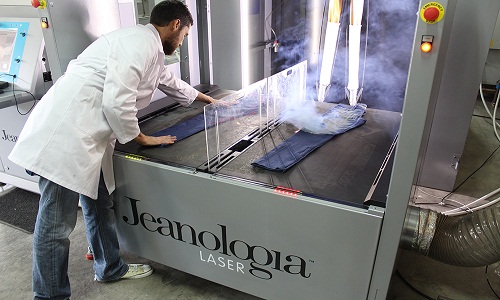
Visitors witnessed the new ‘Dummy Pro’, which enables work on all the fits of the market from very small sizes up to very large sizes, reducing handling and transition times. Currently, 5 per cent of the jeans that are produced in China carry Jeanologia technology in their DNA. Live demonstrations of Flexi Pro, the machinery that incorporates laser, which increases its speed to 30 per cent and obtained an increase of industrial productivity, also took place.
Towards tech transformation
Looking at the promising potential, Jeanologia aims to transform technology landscape in China to sustain its lead position in production of jeans. Efficiency, innovation, speed and ecology are the four pillars on which this technological leap must be based if it wants to avoid relocation to countries where labour is cheaper. Jeanologia PRO technology increases productive capacity of the jean industry and optimizes costs. This new generation laser is most rapid, reliable and accurate. It multiplies the possibilities of design and creativity and allows precise control of real-time production of machines and reduction of water consumption, energy and chemicals.
“In China, production costs have become more expensive as more competitors in Southeast Asia are coming up. The technology of Jeanologia is opportunity for an industry model change. If before it was in the hands of cheap labor, now technology must be bet on to increase productivity and lower costs,” explains Borja Trenor, Director for Asia Pacific Division.
“Chinese companies that want to survive the current economic situation have to introduce technology that enables them to automate production and reduce consumption of energy, water and chemicals at the same time that is respectful to the environment. Those that do not, will not survive,” Trenor opines.
Jeanologia is present in China for more than 10 years and is a technology partner of important brands in the country that have already begun the transformation and that have already adopted the three Spanish company’s sustainable technologies: laser, the ozone and the nanobubbles E-Flow.
UK-based MagicTouch, is known for its full colour image transfer paper and heat presses. Together with laser colour copiers and printers, the machines open up new and exciting opportunities for full colour, high quality image transfer printing onto a limitless range of application products. The company has now introduced a new and unique transfer paper that is considered a game changer for the image transfer garment decoration business. The new T.One™ transfer is a one-step coated paper for use with theTMT/OKi white-toner printers.
The paper is the ultimate solution for cost effective garment transfer that involves no cutting, weeding and more importantly leaves no residue on the finished garment or textile. In the last four months, the product has been marketed to existing White-Toner users in over 25 countries and has been an outstanding success. T.One™ transfer paper enables the user to print full colour (including white) designs to any pastel, white or non-dark garment/textile regardless of colour or composition. This includes cotton, polyester, denim, soft-shell, polypongee and most performance fabrics.
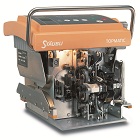
Stäubli’s booths at ITMA + CITME 2016 are not just about technology updates, it’s about the whole experience. Live demonstrations of challenging weaves and weaving preparation processes will vividly illustrate the extraordinary flexibility provided in terms of applications, automation, and services for weaving mills.
Stäubli drives worldwide Jacquard boost with adaptable machinery
In the Jacquard area at the booth, a refined DX Jacquard machine including harness will be shown at a special demonstration stand. This proven Jacquard machine has been redesigned for even longer service life and is being publicly unveiled at this show. Suitable for any standard Jacquard application, the DX can be used with the full range of Stäubli harness types. Stäubli harnesses are widely appreciated by weavers for their levelling features and their perfectly balanced high-quality components, delivering high performance and durability.
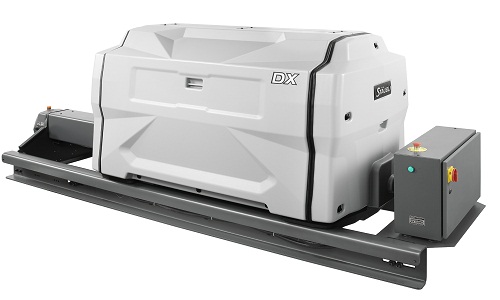
Stäubli will be showing the completely re-engineered electronic LX and LXL Jacquard machines for the first time in Asia. Producing a wide array of fabrics, these machines will demonstrate their exceptional precision and reliability in complete Jacquard installations. The extremely versatile LX Jacquard machines and LXL Jacquard machines are ideal for broad use in modern Jacquard weaving. These new series feature a new lifting mechanism that allows high-speed weaving of even extremely heavy fabrics. With the new coaxial drive shaft and re-sized chassis supporting beams and bearings, the new models can handle up to 26% greater loads than previous models. In addition, the positioning of the fans in the housing of the LX optimises internal airflow, thereby ensuring that the machine interior remains clean and at a controlled temperature. The LX models are available in sizes up to 6,144 hooks, whilst the LXL can achieve up to 36,864 hooks when two machines are combined.
Presenting the third generation of dobbies
Being presented to the public for the first time are the newly developed S3062/S3061 dobbies for water-jet applications. The evolutionary design of these machines now incorporates the exclusive Stäubli locking system for enhanced security and for selection of the heald frames. These technologies are being unveiled with the third generation of electronic rotary dobbies, previously available only for rapier and air-jet machines. The new S3062/S3061 dobbies are being launched in combination with the new generation of high-mounted transmissions, the de82 and de83, featuring perfectly balanced kinematics, reinforced structure, and an integrated controller. Weavers who invest in the high-performance combination of S3062/S3061 dobby and de82/83 transmission will profit from higher output as a result of higher running speeds and superior reliability. In addition, they can run their mill with less maintenance and lower energy consumption.
SAFIR S40 enhances efficiency
Efficient drawing-in of cotton warps is the speciality of the SAFIR S40 automatic drawing-in system. In a single cycle, it draws in directly from one warp beam into drop wires, healds, and reed. Featuring a mobile drawing-in machine, it supports continuous workflows and ensures reliability in terms of quality and quantity resulting in economical production of fabrics like denim, bed and table linens, or blouse and shirt fabrics, produced with a maximum of 12 heald frames. Visitors to the booth will be able to see their future workhorse demonstrating its efficiency while drawing in denim yarn (100% Co), Ne 12, open end.
TOPMATIC warp-tying machine
The well-proven TOPMATIC is also being demonstrated at the Stäubli booth. The model TOPMATIC 201 PC with integrated double-end detection – even for warps with no lease – will show its strengths tying a cotton warp without a 1:1 lease.
MAGMA T12 – automatic warp-tying for technical fibres
Ideal for mills supplying the growing market of technical textiles, the MAGMA T12 warp-tying machine ties medium-to-coarse yarn types, e.g. coarse multifilament, PP ribbons, bast fibres, coarse staple fibres, and many other fibre types. The machine is equipped with an optical system for double-end detection and has a patented yarn separation system, eliminating the need for specific separation needles. A touch-screen panel displays information about the tying process and is used by the operator to conveniently enter parameters and settings. The MAGMA T12 will be demonstrated at the Stäubli booth tying 0.4 mm nylon monofilament yarn.
DEIMO knitting solutions
Stäubli will be showing for the first time in Asia the D4S automatic toe-closing device for circular sock knitting machines. Visitors to the booth will see for themselves how the D4S drastically shortens the sock production process. The latest model in the DEIMO range of controllers, the type 2900 S, serves as an electronic controller for circular knitting machines. DEIMO is presenting its product range at a separate booth in the knitting area: D15 in Hall 4.
Experience Technology the Stäubli way at ITMA Asia 2016
<p>
Stäubli’s booths at ITMA + CITME 2016 are not just about technology updates, it’s about the whole experience. Live demonstrations of challenging weaves and weaving preparation processes will vividly illustrate the extraordinary flexibility provided in terms of applications, automation, and services for weaving mills. </p>
<p>
<h2> Stäubli drives worldwide Jacquard boost with adaptable machinery </h2>
<p>
In the Jacquard area at the booth, a refined DX Jacquard machine including harness will be shown at a special demonstration stand. This proven Jacquard machine has been redesigned for even longer service life and is being publicly unveiled at this show. Suitable for any standard Jacquard application, the DX can be used with the full range of Stäubli harness types. Stäubli harnesses are widely appreciated by weavers for their levelling features and their perfectly balanced high-quality components, delivering high performance and durability. </p>
<p>
Stäubli will be showing the completely re-engineered electronic LX and LXL Jacquard machines for the first time in Asia. Producing a wide array of fabrics, these machines will demonstrate their exceptional precision and reliability in complete Jacquard installations. The extremely versatile LX Jacquard machines and LXL Jacquard machines are ideal for broad use in modern Jacquard weaving. These new series feature a new lifting mechanism that allows high-speed weaving of even extremely heavy fabrics. With the new coaxial drive shaft and re-sized chassis supporting beams and bearings, the new models can handle up to 26% greater loads than previous models. In addition, the positioning of the fans in the housing of the LX optimises internal airflow, thereby ensuring that the machine interior remains clean and at a controlled temperature. The LX models are available in sizes up to 6,144 hooks, whilst the LXL can achieve up to 36,864 hooks when two machines are combined. </p>
<p>
<h2> Presenting the third generation of dobbies </h2>
<p>
Being presented to the public for the first time are the newly developed S3062/S3061 dobbies for water-jet applications. The evolutionary design of these machines now incorporates the exclusive Stäubli locking system for enhanced security and for selection of the heald frames. These technologies are being unveiled with the third generation of electronic rotary dobbies, previously available only for rapier and air-jet machines. The new S3062/S3061 dobbies are being launched in combination with the new generation of high-mounted transmissions, the de82 and de83, featuring perfectly balanced kinematics, reinforced structure, and an integrated controller. Weavers who invest in the high-performance combination of S3062/S3061 dobby and de82/83 transmission will profit from higher output as a result of higher running speeds and superior reliability. In addition, they can run their mill with less maintenance and lower energy consumption. </p>
<p>
<h2> SAFIR S40 enhances efficiency </h2>
<p>
Efficient drawing-in of cotton warps is the speciality of the SAFIR S40 automatic drawing-in system. In a single cycle, it draws in directly from one warp beam into drop wires, healds, and reed. Featuring a mobile drawing-in machine, it supports continuous workflows and ensures reliability in terms of quality and quantity resulting in economical production of fabrics like denim, bed and table linens, or blouse and shirt fabrics, produced with a maximum of 12 heald frames. Visitors to the booth will be able to see their future workhorse demonstrating its efficiency while drawing in denim yarn (100% Co), Ne 12, open end. </p>
<p>
<h2> TOPMATIC warp-tying machine </h2>
<p>
The well-proven TOPMATIC is also being demonstrated at the Stäubli booth. The model TOPMATIC 201 PC with integrated double-end detection – even for warps with no lease – will show its strengths tying a cotton warp without a 1:1 lease. </p>
<p>
<h2> MAGMA T12 – automatic warp-tying for technical fibres </h2>
<p>
Ideal for mills supplying the growing market of technical textiles, the MAGMA T12 warp-tying machine ties medium-to-coarse yarn types, e.g. coarse multifilament, PP ribbons, bast fibres, coarse staple fibres, and many other fibre types. The machine is equipped with an optical system for double-end detection and has a patented yarn separation system, eliminating the need for specific separation needles. A touch-screen panel displays information about the tying process and is used by the operator to conveniently enter parameters and settings. The MAGMA T12 will be demonstrated at the Stäubli booth tying 0.4 mm nylon monofilament yarn. </p>
<p>
<h2> DEIMO knitting solutions </h2>
<p>
Stäubli will be showing for the first time in Asia the D4S automatic toe-closing device for circular sock knitting machines. Visitors to the booth will see for themselves how the D4S drastically shortens the sock production process. The latest model in the DEIMO range of controllers, the type 2900 S, serves as an electronic controller for circular knitting machines. DEIMO is presenting its product range at a separate booth in the knitting area: D15 in Hall 4. </p>



